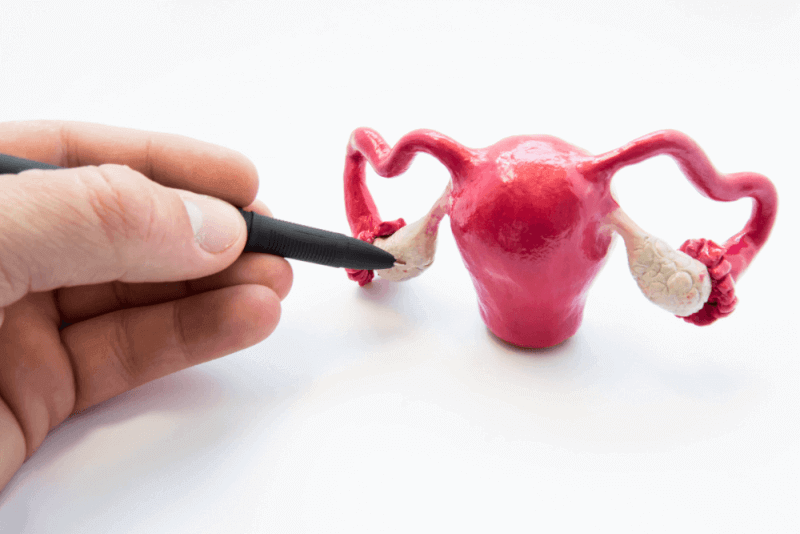What is Vaginal Agenesis (Congenital Absence of the Vagina)?
Vaginal agenesis, a congenital defect, occurs when the fetus's vagina does not develop properly in the mother's womb. In these patients, the vagina may be partially or completely absent. Although vaginal agenesis is present from birth, it may not be diagnosed until puberty.
In these individuals, the external genital organs typically appear normal, which is why the condition may not be recognized until puberty. The reason for this is the absence of menstruation during puberty.
Vaginal agenesis is often associated with other reproductive system issues. These individuals may lack a fully developed uterus or fallopian tubes. A step-by-step approach is applied in the treatment of vaginal agenesis. In some cases, surgery may be required to create a vaginal opening. Due to the effects of the condition on reproductive organs, some individuals may not be able to have children.
What is Rokitansky Kuster Syndrome?
Mayer-Rokitansky-Küster-Hauser (MRKH) syndrome, a rare condition that causes abnormalities in the reproductive organs, is the most common disorder associated with vaginal agenesis. The syndrome results in the abnormal development or complete absence of the vagina and uterus. Depending on the type and severity of the syndrome, other abnormalities may occur in the cervix, spine, and limbs. Additionally, hearing problems, heart defects, and kidney abnormalities may arise.
Women born with this condition, also known as müllerian agenesis, have normal female chromosomes. Therefore, their ovaries function normally, allowing hormones to be produced as usual, leading to female characteristics like breast development.
Causes of Vaginal Agenesis (Congenital Absence of the Vagina)
Experts have not fully determined the factors causing vaginal agenesis. However, vaginal agenesis occurs during the fetal development in the mother's womb. These individuals experience abnormal development of reproductive organs during the first 20 weeks of fetal growth.
Factors that may contribute to these abnormalities include exposure to toxic substances during pregnancy or genetic causes. Vaginal agenesis may be a sign of or occur alongside various conditions, including disorders of sex development. These conditions include MRKH syndrome and androgen insensitivity syndrome.
Symptoms of Vaginal Agenesis (Congenital Absence of the Vagina)
Vaginal agenesis generally does not cause any issues that hinder the normal development of females until they reach puberty. Therefore, vaginal agenesis is characterized by the following features:
- The external genitalia appear similar to typical female genitalia.
- The vagina may be shortened without a cervix or may not be present at all. In this case, a slight indentation is typically found where the vaginal opening should be.
- The uterus may be absent or partially developed. If the tissue lining the uterus is present, monthly cramps and chronic abdominal pain may occur.
- The ovaries are typically fully developed and functional, although they may be located in an unusual position within the abdomen. Sometimes, fallopian tubes may be absent or not typically developed.
Vaginal agenesis may also be associated with the following issues:
- Problems with the development of the kidneys and urinary tract
- Developmental changes in the spine, ribs, and wrist bones
- Hearing problems
- Other congenital conditions involving the heart, gastrointestinal system, and limb growth.
Diagnosis Criteria for Vaginal Agenesis (Congenital Absence of the Vagina)
Vaginal agenesis is usually diagnosed during infancy or childhood. However, in some cases, the diagnosis is made during puberty when menstruation does not occur. The methods used to diagnose vaginal agenesis include:
- Physical examination of the vaginal or anal area
- Ultrasound imaging to view the vagina and pelvic organs
- MRI provides detailed imaging of the vagina and reproductive organs.
In addition to these methods, DNA testing may be conducted to search for chromosomal abnormalities, allowing the confirmation of certain conditions such as MRKH syndrome.
Treatment Methods for Vaginal Agenesis (Congenital Absence of the Vagina)
Treatment for vaginal agenesis typically begins around the ages of 19-20. However, if individuals prefer to wait until they are older, this is also acceptable. The treatment plan is tailored to individual circumstances.
Self-Dilation
The first choice for treating vaginal agenesis is usually self-dilation. In this method, a firm, tampon-like device is pressed against the vaginal opening or existing vaginal opening for 10 to 30 minutes, 1 to 3 times a day.
The device used in self-dilation is called a dilator. As the vaginal canal gradually expands, larger dilators are used. The treatment must continue for several months to achieve the desired outcome.
In some patients, using a dilator can cause problems such as vaginal bleeding and pain, as well as difficulty urinating. Artificial lubricants or different dilators may be needed. The application is most effective after a warm bath when the skin is more elastic.
Additionally, vaginal expansion can be achieved through sexual intercourse. If a willing partner is involved, it is important to discuss this with a doctor.
Vaginal Agenesis Surgery
When self-dilation does not result in vaginal expansion, a vaginoplasty may be necessary to create a functional vagina.
Surgical Methods for Vaginal Agenesis
Since the issues caused by vaginal agenesis can vary, different surgical methods may be used during the procedure.
Using Tissue Grafts
Various grafts can be chosen for creating the vagina using the patient's tissue. Possible sources include the outer thigh, hip, or lower abdomen.
The surgeon makes an incision to create the vaginal opening, places the tissue graft over a mold, and inserts it into the newly formed canal. The mold remains in place for about a week.
After surgery, the mold may need to be kept in place with a dilator. The dilator can be removed for activities such as going to the toilet or having sexual intercourse. Based on the doctor's advice, the dilator may only need to be used at night. Artificial lubricants and occasional dilation during sexual intercourse help maintain a functional vagina.
Inserting a Medical Traction Device
The surgeon inserts an olive-shaped device (Vecchietti procedure) or a balloon device (balloon vaginoplasty) into the vaginal opening. The surgeon uses a laparoscope as a guide to attach the device to a separate traction device in the lower abdomen or through the navel.
The traction device is tightened daily. Gradually, the device is pulled inward, creating a vaginal canal over about a week. After the device is removed, different-sized molds are used for about three months. After three months, a dilator can be used to maintain a functional vagina, or regular sexual intercourse can be practiced. Lubricant use is usually necessary during intercourse.
Using a Section of the Colon (Bowel Vaginoplasty)
In bowel vaginoplasty, specialists create a new vagina by moving a section of the colon to an opening in the genital area. The remaining colon is then reconnected. After this surgery, daily use of a vaginal dilator is not required, and the need for lubricants during intercourse is reduced.
Benefits of Vaginal Agenesis Surgery
Vaginoplasty surgeries allow patients to experience greater sexual satisfaction and boost their self-confidence. This significantly improves patients' quality of life after recovery.
Complications of Vaginal Agenesis Surgery
The complications that can occur during vaginoplasty surgeries vary depending on the extent of the surgery and the method used. Complications that may arise after vaginoplasty surgery for vaginal agenesis include:
- Painful intercourse
- Numbness
- Loss of sensation
- Infection
- Bleeding
Recovery Process After Vaginal Agenesis Surgery
The recovery process after vaginoplasty surgery involves the following:
- Mild bleeding during the first two days after surgery is normal.
- Swelling and bruising in the genital area may occur. The swelling typically subsides within a few weeks.
- Itching or numbness may be felt during the healing of nerve endings.
- The color of the scar will lighten over time.
- A catheter may be necessary to assist with urination.
Risk Factors of Vaginal Agenesis
Vaginal agenesis can affect sexual intercourse. However, after treatment, the vagina generally functions well for sexual activity.
Women with a missing or underdeveloped uterus may experience infertility. However, if the ovaries are healthy, it is possible to have a child through IVF. The embryo can also be transferred to a surrogate mother.
Vaginal Agenesis (Congenital Absence of the Vagina) and Sexuality
Having vaginal agenesis does not affect the external genital organs, so the clitoris and labia are normal. As a result, it is possible to have a normal sexual life. These organs are sufficient for women to achieve sexual satisfaction. If treated, they can also have a functional vagina, enabling penetrative intercourse.








